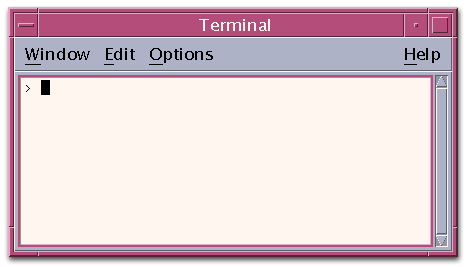Using Command Prompt Window
Using a command prompt window (Unix)
A command prompt window in Unix is referred to as a shell window (or terminal window). Here's an example of a Unix shell window.
When you open a shell window the current directory is usually your home directory. For navigating your file system from the shell window you can use the
cd, ls, mkdir, and pwd commands. Here's a brief description of each of these commands along with some examples. For more complete information on each of these commands, you can issue the command man followed by the command
name.
The cd command |
The cd command is used to change the current directory. |
cd /home/dcrew/progfun |
changes the current directory to /home/dcrew/progfun |
cd .. |
changes the current directory to the parent directory |
cd |
changes the current directory to the home directory |
The mkdir command |
The mkdir command is used to make a directory. |
mkdir progfun |
makes a subdirectory named progfun in the current directory |
The ls command |
The ls command is used to display the contents of a directory. |
ls |
displays the contents of the current directory |
ls home/dcrew/progfun/
|
displays the contents of the directory named /home/dcrew/progfun
|
ls progfun |
displays the contents of the subdirectory named progfun |
The pwd command |
The pwd command is used to display the current directory. |
pwd |
displays the current directory |
You might consider printing this Sidebar, as it may come in handy as you work on the exercises in this module.